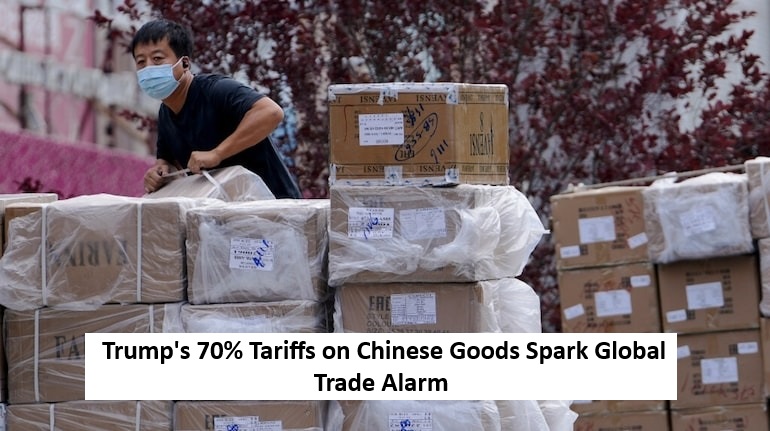
On April 9, the U.S. will implement a 70% tariff on a wide range of Chinese imports, affecting approximately $400 billion worth of goods. While the tariffs aim to counter what President Trump describes as unfair trade practices, economists are warning of a looming “China shock” that may severely disrupt global supply chains. As Chinese exports are redirected to other markets, a massive global oversupply is expected.
The affected goods include electronics, toys, footwear, steel, and manufacturing components. As prices rise in the U.S., American consumers and businesses will feel direct economic pressure.
Impact on Asia and Rising Risk of Global Retaliation
Nations like Vietnam, Japan, and South Korea may face secondary effects as Chinese products flood their markets, increasing competition and prompting possible retaliatory trade actions. The shift could squeeze local manufacturers and destabilize export-led economies.
Countries across the globe, from Brazil to the UK, are already tightening trade barriers in response to rising Chinese exports. Since the first U.S.-China trade tensions began in 2018, over 500 antidumping cases have been filed against Chinese firms, a number expected to grow under the current scenario.
U.S. Industry Faces Supply Challenges Despite Tariffs
Despite aggressive tariff policies, U.S. industries remain deeply reliant on Chinese imports. In 2024, China supplied:
20% of imported steel,
33% of footwear,
75% of toys.
Shifting away from Chinese suppliers may not be feasible for many critical components, and reshoring manufacturing will take significant time and investment.
Global Demand Weakens as China Struggles Internally
The timing of the tariff hike raises further concern as global demand remains weak. Within China, domestic spending is down, and the property market remains unstable. Economists suggest that Beijing may need to implement stimulus policies—including rate cuts and government borrowing—to boost consumption and reduce reliance on exports.
Beijing Pledges to Retaliate, More Trade Friction Expected
In response to the new U.S. duties, Chinese officials have promised firm retaliation, although specific countermeasures have yet to be announced. Past strategies included targeting U.S. agricultural exports and placing restrictions on American firms.
Tariff Expansion Beyond China Signals Broader Shift
Trump’s latest measures are not limited to China. Starting April 5, the U.S. imposed a flat 10% tariff on imports from several major partners, including the EU, Vietnam, Japan, and South Korea. The move reflects a wider protectionist turn in U.S. trade policy.
Experts Warn of Escalation Ahead
“The real fireworks are yet to come,” warned economist Michael Pettis from Peking University. With trade tensions rising and the global economy still recovering, the impact of sweeping U.S. tariffs could strain consumer prices domestically while shaking the foundation of international trade systems.
Read More: World Bank Approves 700 Million Dollars for Pakistan to Boost Economic Stability and Public Services

 Share
Share



